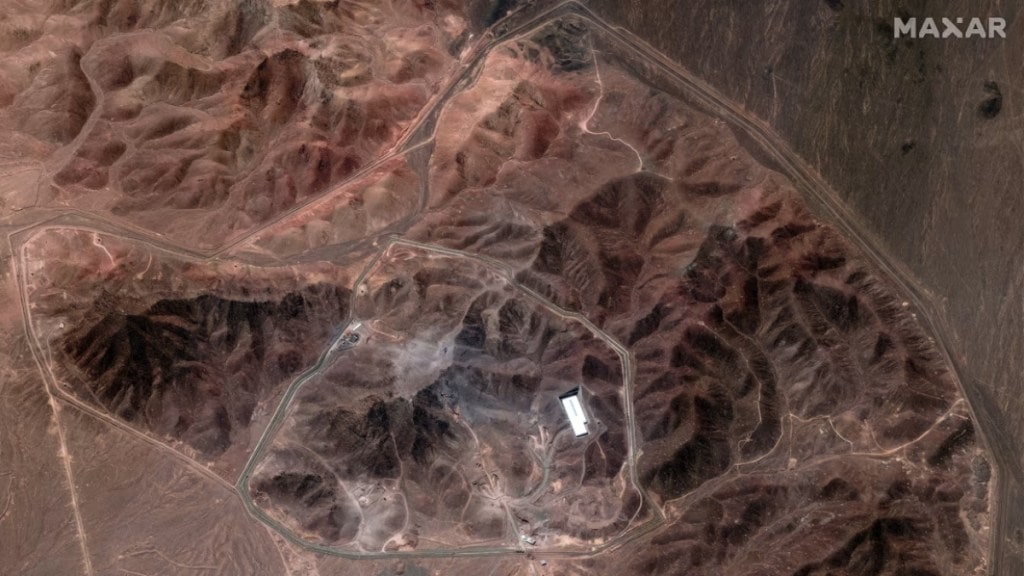Israel vs Iran War: Recent satellite imagery has raised questions about the effectiveness of US military strikes on Iran’s nuclear infrastructure. Despite US President Donald Trump’s claims that the Fordow, Natanz, and Isfahan nuclear facilities were “completely and totally obliterated,” new visuals suggest that operations continue at some of the sites, particularly at Fordow.
What satellite images revealed?
Satellite photos released by Maxar Technologies on Sunday directly challenge the Trump administration’s assertion of a complete shutdown. The images show continued activity at Iran’s Fordow nuclear fuel enrichment site, which was heavily targeted during the US air campaign dubbed Operation Midnight Hammer on June 22, reports CNN.
According to Maxar, the visuals indicate ongoing work around the northern ventilation shaft, one of the main targets of the airstrikes. An excavator, a crane, and several personnel can be seen operating in the area. Multiple vehicles are parked along an access path built into the ridge near the shaft. These observations suggest damage control or repair efforts may already be underway.
Operation Midnight Hammer
The Fordow site was one of three nuclear facilities targeted during Operation Midnight Hammer, a large-scale US military strike involving 125 aircraft, including B-2 Stealth bombers. The mission also included Tomahawk cruise missile launches from a US submarine aimed at Isfahan.
At Fordow, US forces used Massive Ordnance Penetrator (MOP) bombs, designed to destroy deeply buried bunkers. General Dan Caine, Chairman of the Joint Chiefs of Staff, explained that the bombs were meant to travel at speeds exceeding 1,000 feet per second down ventilation shafts and into the underground facility before detonation.
Trump, in a national address, praised the strike as a complete success, claiming that Iran’s nuclear enrichment capabilities had been neutralised. “Iran’s key nuclear enrichment facilities have been completely and totally obliterated,” he declared.
IAEA chief warns Iran can resume uranium enrichment in months
Despite Trump’s claims, Rafael Grossi, Director-General of the International Atomic Energy Agency (IAEA), provided a more sobering assessment. In an interview with CBS News, Grossi acknowledged the damage but warned that Iran retains the knowledge and capability to resume uranium enrichment.
“The capacities they have are there,” Grossi said. “In a matter of months or even less they could restart several cascades of centrifuges.” He added that Iran’s nuclear knowledge cannot simply be erased, emphasising that technological expertise, once gained, remains with the country.
Grossi’s remarks further cast doubt on the long-term success of the US strikes, highlighting the enduring nature of Iran’s nuclear ambitions and its ability to rebuild.
President Trump has stated that he is open to additional military strikes should Iran return to “worrisome” enrichment levels.

